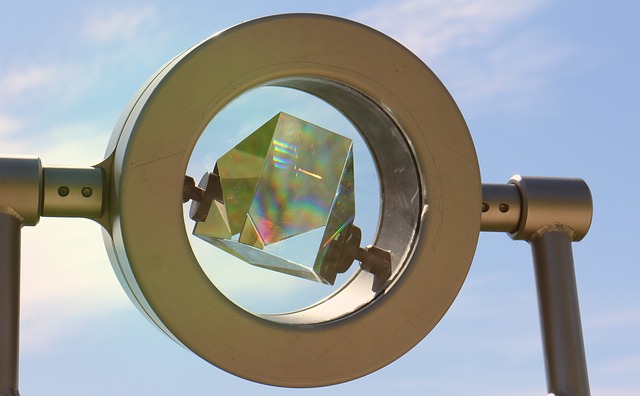In the intricate realm of optics, optical prisms stand as pivotal components, playing an indispensable role in the manipulation and control of light. From laser technology to imaging systems, prisms play a crucial role in manipulating and controlling light with precision. In this article, we delve into the world of optical prisms, examining their types and applications, including laser dispersing prisms, Pellin-Broca prisms, right-angle prisms, corner cubes, and cube beamsplitters.

Understanding Optical Prisms:
Optical prisms are transparent optical elements with flat, polished surfaces that refract, reflect, and disperse light. The basic geometry of a prism includes two triangular bases and three rectangular sides, each meeting at precise angles. These angles determine the prism’s ability to manipulate light, allowing for a range of optical applications.
Beyond light redirection, prisms are essential in managing chromatic aberration—the tendency of lenses to separate light into its component colors. By dispersing light into its spectral components and allowing for precise color correction, prisms contribute to the production of high-quality images with minimal aberrations.
Prism Types and Their Optical Functions:
Laser Dispersing Prisms:
Laser dispersing prisms are integral components in laser technology, facilitating controlled divergence or convergence of laser beams. Their applications span various industries, including spectroscopy, medical diagnostics, and materials processing, where precise beam control is paramount.
Pellin-Broca Prisms:
Noted for their capacity to achieve beam deviation without introducing chromatic aberrations, Pellin-Broca prisms find utility in applications demanding high spectral purity. Commonly employed in spectrometers and optical instruments, these prisms contribute to accurate analyses in fields such as chemistry, biology, and environmental science.
Right Angle Prisms:
The versatility of right-angle prisms positions them as essential elements in optical systems. Their 90-degree angle allows for efficient redirection of light without inverting or reversing the image. Widely used in cameras, surveying equipment, periscopes, and binoculars, right-angle prisms contribute to compact and effective optical designs.
Corner Cubes:
Corner cubes, or retroreflectors, play a critical role in maintaining a consistent line of sight. These prisms reflect light back towards its source, irrespective of the angle of incidence. Applied in surveying, satellite communication, and alignment systems, corner cubes ensure accurate measurements and data transmission.
Cube Beamsplitters:
Cube beamsplitters are fundamental components in optical systems where splitting or combining light paths is required. These prisms divide incident light into two orthogonal polarization components, making them valuable in applications such as interferometry, microscopy, and telecommunications.
Within the intricate landscape of optics, optical prisms emerge as fundamental tools, shaping the manipulation and utilization of light. Laser dispersing prisms, Pellin-Broca prisms, right-angle prisms, corner cubes, and cube beamsplitters and other prism types each serve distinct purposes in diverse applications, from precision spectroscopy to advanced imaging systems. As technology continues to progress, the role of optical prisms in shaping the future of optics remains as consistent and methodically integral as the beams of light they adeptly manipulate.










